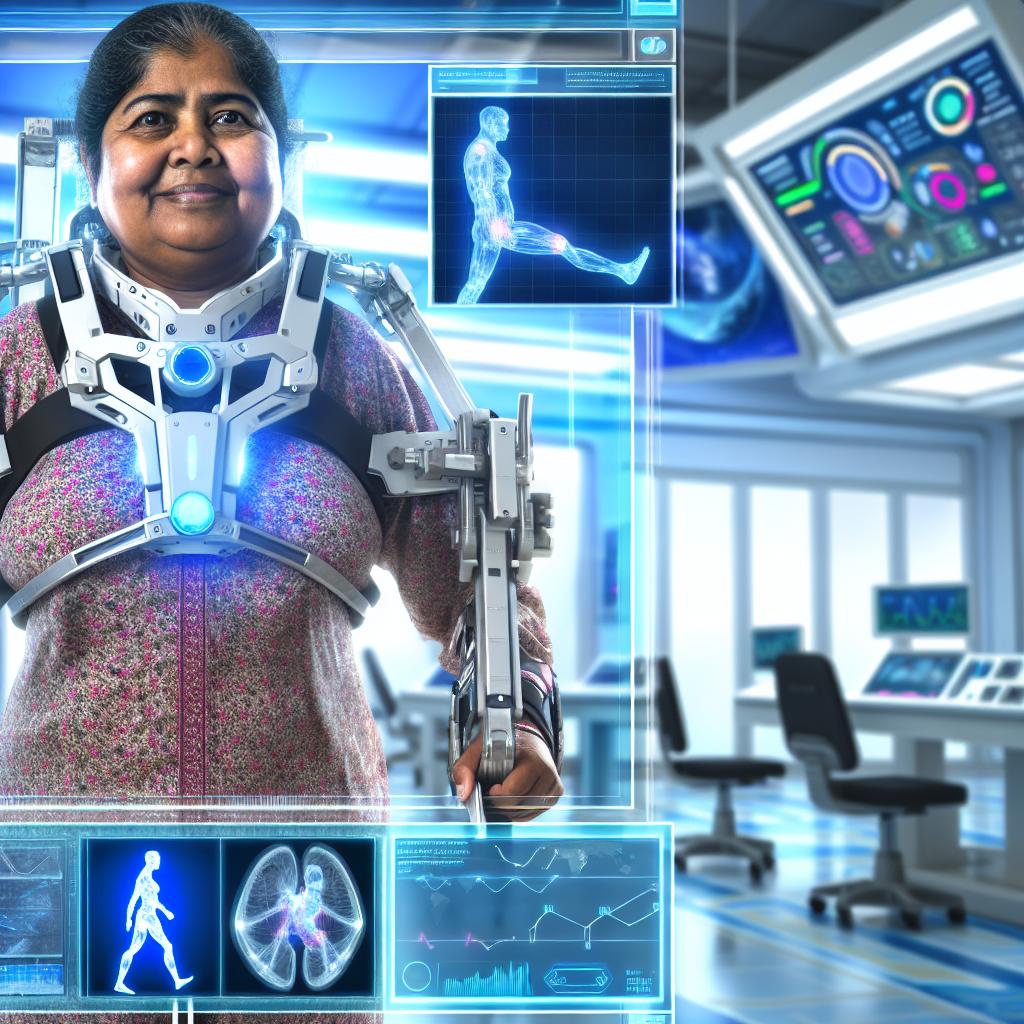Introduction to Exoskeletons
Exoskeletons, originally inspired by the natural armor found in insects and crustaceans, are emerging as a promising technology for mobility assistance. These advanced, wearable devices are designed to enhance or restore human movement by providing external mechanical support. They hold significant potential for improving the quality of life for individuals with mobility impairments, including those suffering from spinal cord injuries, strokes, or muscular degenerative conditions.
How Exoskeletons Work
Exoskeletons typically consist of frame structures worn on the body and are equipped with actuators, sensors, and control systems. The actuators are the devices that mimic muscle power, providing the necessary force to assist or initiate limb movement. Sensors collect real-time data on the user’s movements, which is then processed by control systems to ensure the exoskeleton reacts appropriately to the user’s needs. This synergy allows for natural, intuitive interactions between the user and the device.
This ability to mimic natural movement patterns is achieved through a combination of sophisticated components and algorithms. The actuators serve as artificial muscles, often using electric motors, pneumatics, or hydraulics to generate the required motion. The sensors, often comprising gyroscopes and accelerometers, continuously monitor the user’s posture and movement to provide feedback to the system.
Control systems form the brains of the exoskeleton. These systems are crucial as they analyze data from the sensors and actuators to coordinate movement. Advanced control algorithms make use of complex feedback loops, ensuring the device’s movement is synchronized with the user’s intended action. This requires a deep understanding of biomechanics and robotics to ensure that the exoskeleton does not merely amplify movement but does so in a way that is beneficial and safe for the user.
Types of Exoskeletons for Mobility Assistance
While exoskeleton technology can be found in various sectors, from industrial to military, a significant focus has been placed on medical applications. Two primary categories exist in the realm of mobility assistance:
Lower Limb Exoskeletons are designed to provide support and enable mobility for users affected by lower body paralysis or weakness. These devices can allow users to stand, walk, and sit, significantly enhancing their independence. They are particularly beneficial for individuals with spinal cord injuries. The lower limb exoskeletons typically bind around the user’s legs and trunk, assisting movement in a manner that complements their existing capabilities.
On the other hand, Full Body Exoskeletons cater to individuals with more extensive mobility challenges. These devices provide comprehensive support from the legs to the arms and torso, allowing users to perform a broader range of functions and tasks. They are especially relevant for individuals with severe disabilities resulting from conditions such as quadriplegia. Full body exoskeletons facilitate a range of daily tasks, offering an enhancement that enables significant improvements in living conditions and autonomy.
Recent Advancements and Applications
Recent advancements have been concentrated on improving the functionality and accessibility of exoskeletons. Developments in lightweight materials and power-efficient actuators have resulted in devices that are more comfortable and practical for everyday use. These materials, such as carbon fiber composites and advanced alloys, reduce the weight burden on users while maintaining high strength and durability.
Power efficiency has also seen significant advancements with improved battery technologies and energy harvesting techniques. This means exoskeletons can operate for longer periods, increasing their practical usability for extended activities throughout the day.
Additionally, integration with machine learning algorithms enables more adaptive and personalized user experiences. Machine learning allows the exoskeleton to learn from user patterns, adjusting its responses over time to tune performance according to the specific requirements and preferences of the individual user. This enhances the user’s comfort and the effectiveness of rehabilitation exercises.
In practical applications, exoskeletons have been successfully employed in rehabilitation centers where they augment physical therapy sessions, helping patients in neuro-recovery processes. These devices play a crucial role in promoting neuroplasticity by enabling repetitive, assisted movements that help retrain the brain and nerves.
Simultaneously, they are also being introduced into home environments, offering less intensive rehabilitation options and mobility support for daily activities. Home-based exoskeleton systems are tailored for ease of use, allowing integration into everyday routines which empowers users to perform daily tasks with greater ease and autonomy.
Challenges and Future Prospects
Despite notable progress, exoskeleton technology faces several challenges. These include high costs, the requirement for extensive customization, and the need for further improvements in power supply efficiency. The cost of currently available exoskeletons can be prohibitive, limiting access to those who could benefit most from them. Customization needs are intricately tied to individual user requirements, necessitating technology that can be seamlessly adapted to different body types and functional requirements.
Researchers are actively addressing these issues, with ongoing studies exploring cheaper manufacturing methods, more efficient battery technologies, and universal designs that offer flexible fitting options. Efforts are being made to develop scalable manufacturing techniques and to leverage economies of scale in the production of more affordable exoskeleton units.
Looking to the future, exoskeletons promise to become increasingly integrated within healthcare systems, enabling not only rehabilitation but also broader applications, such as assistive devices for aging populations. As these devices become more prevalent, they are expected to shift from a niche market to a more mainstream appeal.
The evolution of exoskeleton technology is anticipated to witness significant leaps in the coming years, contributing to an era where their use is as common as current orthotic devices. This broad integration could revolutionize treatment practices across a variety of conditions, potentially leading to new standards in patient care and mobility solutions.
Ultimately, as this technology continues to develop, it will likely contribute significantly to transforming how society addresses mobility challenges, ultimately improving the independence and quality of life for many individuals. Such advancements hold the potential to reshape perceptions of disability and ability, fostering inclusivity and empowerment across diverse user communities.
